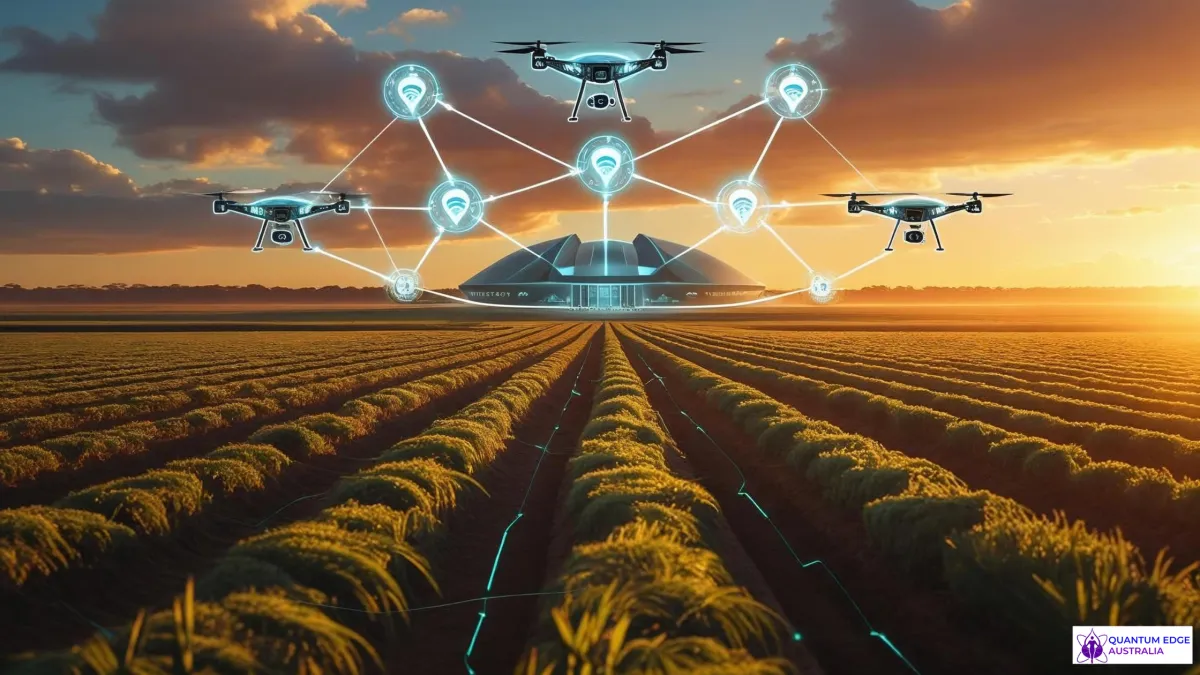
The Future of Farming in Australia and Innovation
Table Of Contents:
Australia’s agricultural story is one of adaptation:
Common Challenges That Demand Innovation
From Aussie Farms to Mars: Tech with Cosmic Potential
Build resilient systems—grow tomorrow’s harvest today
From Insight to Impact: Our Path Forward
The future of farming in Australia isn’t a distant sci-fi dream—
Australia’s farming history…
Stretches from rugged paddocks tended by hand to sprawling fields overseen by satellite. It also has always pushed boundaries—from the horse-drawn plows of early settlers, to today’s drone-scouted fields.
Yet today, we’re at a tipping point—where vertical farms, precision IoT sensors, and aeroponic systems once bound for Mars are redefining what “farm” means. Each style offers unique solutions—and sparks crucial questions:
Have you ever wondered:
How might aeroponic towers in Melbourne translate to zero-gravity farms on Mars?
How might we adapt hydroponic towers for lunar bases?
Or develop our bodies’ metabolism to survive long-term space travel?
What agricultural challenges in Australia could spark worldwide solutions?
Could your next impact venture be a seed sensor or vertical-farm kit?
These are the frontiers we explore together.
In this post, I’ll share my perspective on why these shifts matter—not just for yield, but for the future of food, water, and even cosmic possibility.
Australia’s agricultural story is one of adaptation:

1960s–80s: Traditional Broadacre – Wide-acre grains, grazing sheep and cattle, reliant on rainfall and big-machinery.
Mechanization revolutionized large-scale grain and dairy farms.
2000s–20s: Precision Agriculture-Droughts and climate extremes forced the rise of precision ag— the marriage of AI, IoT sensors, drones, and satellite imagery to monitor crops, soil, and weather in real time.
IoT soil probes (CropX), drones with multispectral cameras, and CSIRO’s ePaddocks™ satellite maps for real-time decision-making.
Did You Know?
ePaddocks™ by CSIRO has already mapped 1.7 million paddocks via AI‐driven boundary detection, saving farmers hours of manual mapping csiro.au.
CropX sensors and analytics report up to 14% yield increases, 57% less water use, and 15% less fertilizer in commercial trials cropx.com.
Today: Controlled-Environment & Space-Ready Systems – Vertical hydroponics in repurposed warehouses, aeroponic pods like NASA’s Veggie (on the ISS), and experimental zero-gravity greenhouses. Vertical farms in Sydney and Adelaide grow leafy greens year-round under LED light, and aeroponics (nutrient mist, no soil) have broken ground in Perth.
Did You Know?
NASA’s Veggie module successfully grew lettuce in microgravity using LED-driven aeroponics—proof that space farming is no longer science fiction.
NASA's ISS Veggie experiment validated aeroponics in low gravity—planting seeds for both Earth's future and our extraterrestrial ambitions.
Common Challenges That Demand Innovation
Water scarcity & unreliable rainfall affecting crop viability
Labor shortages in remote regions and rising costs
Crop disease and pest outbreaks spreading with warming climates
Soil depletion and nutrient imbalance over generations
Supply chain fragility—from paddock to plate, especially in floods or fires
Adapting farming tech for space: How do we grow fresh food on Mars with no soil or grid?
From Aussie Farms to Mars: Tech with Cosmic Potential
Aeroponics: Already saving water on Earth, and proven on the ISS—zero-gravity compatible and soil-free.
Vertical Farming: Modular LED-lit towers could be repurposed for orbital habitats.
AI-Controlled Microclimates: On Earth, they stave off bushfires and heat stress; in space, they’ll sustain life support systems.
Build resilient systems—grow tomorrow’s harvest today
Opinion and Insights

I’m thrilled seeing vertical farms spin up in Melbourne rooftops, and soil sensor arrays spreading across paddocks faster than ever. But I also think we're just scratching the surface. I watched fresh greens harvested daily under LED skies—and I thought, this is resilience embodied.
Technology isn’t just efficiency—it’s hope.
Traditional farms teach us scale; precision ag teaches us respect for data; controlled environments teach us scarcity management.
To me, innovation means purpose. Each system poses its own questions—like:
How do we biohacking-optimize human metabolism to digest nutrient-rich space crops?
What if we could develop low-cost aeroponic kits tailored for Indigenous communities? Or design IoT-based livestock trackers—and then adapt those same systems for future space ranches?
These insights guide my work: not to replace the old, but to weave new threads of tech-health-spiritual innovation into Australia’s agri-tapestry.
Broader Implications

For Gen MZ innovators, these evolutions offer playgrounds for conscious entrepreneurship:
Vertical Farming Kits as local startup offerings
DIY IoT Sensor Bundles to serve remote growers
Aeroponic-inspired Wellness Products that mimic space-farm nutrient delivery
Imagine launching a marketable product development venture around low-cost IoT kits for remote ranchers, or building a Cosmic Soulcraft retreat where participants design their own aeroponic garden.
The lines between agriculture, technology, and consciousness are blurring—and that’s exactly where Quantum Edge Australia thrives.
From Insight to Impact: Our Path Forward
Insight Gathering: Monthly think-tanks uniting farmers, engineers, and biohackers to surface real-world challenges.
Prototype Pilots: Field trials of low-cost IoT kits in remote paddocks or urban rooftops.
Impact Amplification: Sharing success stories, lesson-learned reports, and scaling blueprints with our wider community.
The future of farming in Australia isn’t a distant sci-fi dream—
It’s unfolding now, paddock by paddock, code line by code line. From precision-ag IoT to Martian aeroponics, the next era of conscious innovation demands that we merge heart and hardware, purpose and protocol.
Join me in cultivating this new frontier. Together, we’ll plant the seeds of sustainable yields, spiritual growth, and cosmic possibility.
Build resilient systems—grow tomorrow’s harvest today
